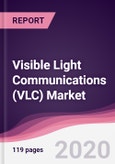What is Visible Light Communication?
Visible Light Communication is the sub segment of Optical Wireless Communication technologies. This communication technologies, data has been transferred using visible light in the range of 400 to 800 THz. Fluorescent light lamps are used in this technology for signal transmission at the rate of 10Kbps.
What are the major applications of Visible Light Communication?
Ubiquitous Computing is one of the major application where visible light spectrum communication has been broadly used. The reason behind, VLC devices such as traffic signals, car headlights, indoor/outdoor lamps, TV’s, commercial displays have the accessibility to use anywhere. This VLC is applicable only for low-power applications. Smart Lighting integrated with VLC will control the illuminations and communicate which will remarkable lessen the consumption of energy and wiring inside any infrastructure. In Aviation, VLC is used to offer media applications to the passengers without using wires. The most significant advantage of using VLC as replacement of radio-frequency is, visible light spectrum is 10,000x of radio frequency spectrum.
Market Research and Market Trends of Visible Light Communication
- Mergers & Acquisitions: Light Fidelity (Li-Fi), one of the developing VLC technologies in which very few companies making investment to enhance its application. Lucium Communication is one of the predominant player in VLC Technologies which was recently acquired by Phillips Light which is the major market player in Lighting Technologies. It is expected that, this acquisition of Lucium by Phillips electronics would be less than EUR 10 million. This business move done by Phillips shows that its development of its abilities in LI-Fi, the VLC technology in which data can be transferred by light at an extraordinary speed.
- Infrastructure Development: It is estimated that the market value of VLC in the Middle East countries is $72.3mn with a CAGR of 97.3% in the next few years. Since the growth rate is high Many Dubai based companies such as Telco Du., Zero 1., are coming forward to invest in Li-Fi and to make the middle east to be the first nation to have full Li-Fi coverage. It is expected that the demand for innovation in infrastructural development would give prominent rise in the development of Li-Fi Technologies by the companies in the Middle East regions.
- Research & Development: Li-Fi has not only explored the world but also in progress to explore the Space. NASA has signed a Space Act Agreement with LVX Sys Corp. to enhance and innovate the technology in high-speed wireless communication. It is expected that Kennedy Space Center will provide research and technological development offer in VLC to LVX System in the next five years.
Who are the Major Players in market?
The key players operating in the Visible Light Communication Market are Panasonic Corp., Philips NV., Firefly Wireless Network., Lucibel, LVX System., GE Corp., Axrtek, and other 10 more companies.
What is our report scope?
The report incorporates in-depth assessment of the competitive landscape, product market sizing, product benchmarking, market trends, product developments, financial analysis, strategic analysis and so on to gauge the impact forces and potential opportunities of the market. Apart from this the report also includes a study of major developments in the market such as product launches, agreements, acquisitions, collaborations, mergers and so on to comprehend the prevailing market dynamics at present and its impact during the forecast period 2020-2025.
Key Takeaways from this Report
- Evaluate market potential through analyzing growth rates (CAGR %), Volume (Units) and Value ($M) data given at country level – for product types, end use applications and by different industry verticals.
- Understand the different dynamics influencing the market – key driving factors, challenges and hidden opportunities.
- Get in-depth insights on your competitor performance – market shares, strategies, financial benchmarking, product benchmarking, SWOT and more.
- Analyze the sales and distribution channels across key geographies to improve top-line revenues.
- Understand the industry supply chain with a deep-dive on the value augmentation at each step, in order to optimize value and bring efficiencies in your processes.
- Get a quick outlook on the market entropy – M&A’s, deals, partnerships, product launches of all key players for the past 4 years.
- Evaluate the supply-demand gaps, import-export statistics and regulatory landscape for more than top 20 countries globally for the market.
Table of Contents
Methodology

LOADING...








